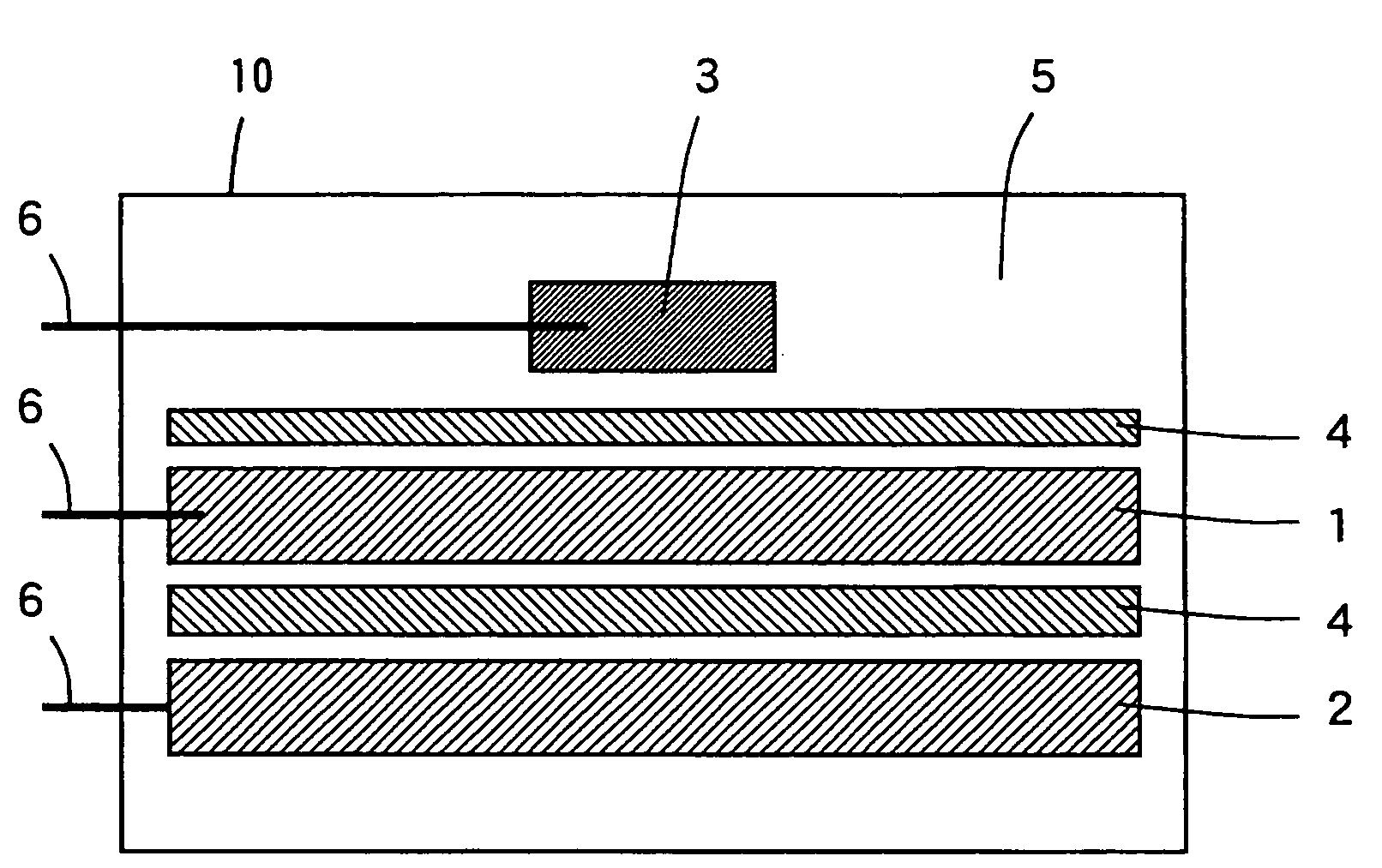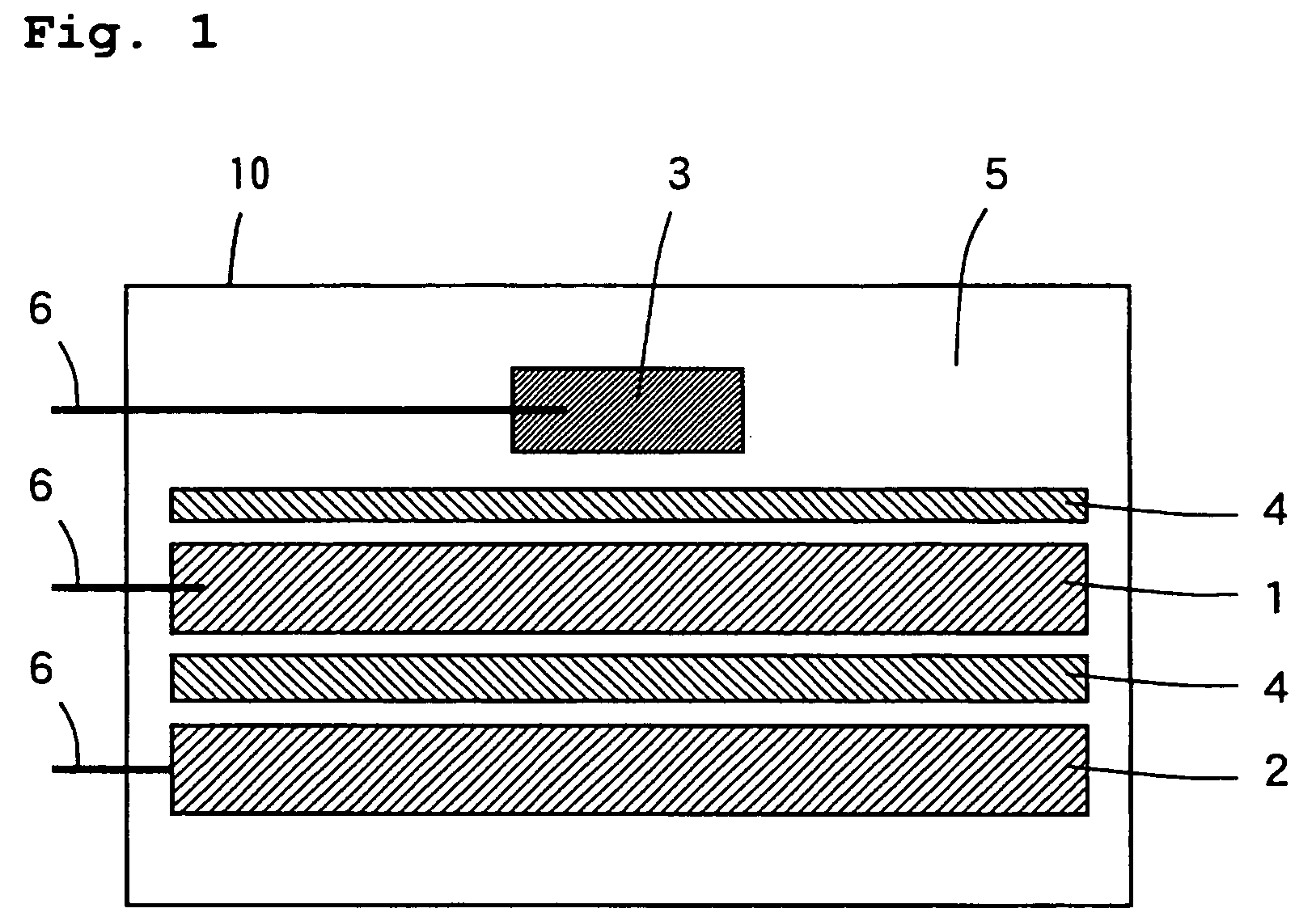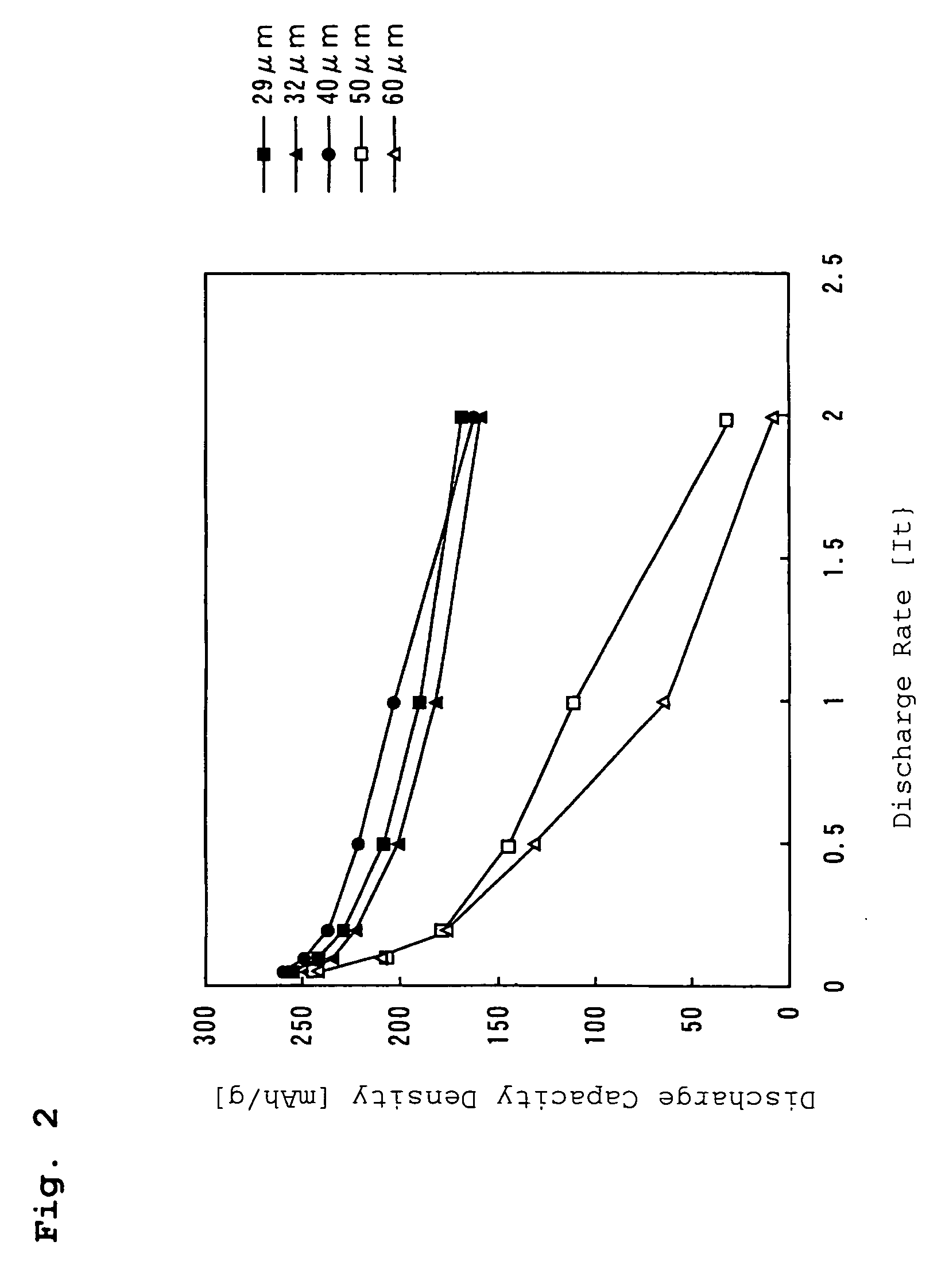Non-aqueous electrolyte secondary battery and positive electrode
- Summary
- Abstract
- Description
- Claims
- Application Information
AI Technical Summary
Benefits of technology
Problems solved by technology
Method used
Image
Examples
example 1
(a) Example 1
[0067]In Example 1, a positive electrode 1 was prepared in the following manner. A lithium-rich transition metal oxide Li1.20Mn0.54Ni0.13CO0.13O2 was used as the positive electrode active material. First, lithium hydroxide (LiOH) and Mn0.67Ni0.17Co0.17(OH)2 prepared by coprecipitatation were mixed so as to be in a desired stoichiometric ratio, and the mixed powder was used as the starting material. The mixed powder was formed into pellets and sintered in the air at 900° C. for 24 hours. Thus, a positive electrode active material comprising Li1.20Mn0.54Ni0.13CO0.13O2 was synthesized.
[0068]The synthesized positive electrode active material and acetylene black as a conductive agent were mixed together so that the amount of the positive electrode active material was 90 weight % with respect to the total amount of the positive electrode mixture and the amount of the conductive agent was 5 weight % with respect to the total amount of the positive electrode mixture. Thereafter...
example 2
(b) Example 2
[0073]In Example 2, the film thickness of the positive electrode mixture subsequent to the pressure-rolling was set at 32 μm by adjusting the amount of the slurry applied to the aluminum foil by the coater. A test cell was prepared in the same manner as described in Example 1, except for the film thickness of the positive electrode mixture subsequent to the pressure-rolling.
example 3
(c) Example 3
[0074]In Example 3, the film thickness of the positive electrode mixture subsequent to the pressure-rolling was set at 40 μm by adjusting the amount of the slurry applied to the aluminum foil by the coater. A test cell was prepared in the same manner as described in Example 1, except for the film thickness of the positive electrode mixture subsequent to the pressure-rolling.
PUM
 Login to View More
Login to View More Abstract
Description
Claims
Application Information
 Login to View More
Login to View More - R&D
- Intellectual Property
- Life Sciences
- Materials
- Tech Scout
- Unparalleled Data Quality
- Higher Quality Content
- 60% Fewer Hallucinations
Browse by: Latest US Patents, China's latest patents, Technical Efficacy Thesaurus, Application Domain, Technology Topic, Popular Technical Reports.
© 2025 PatSnap. All rights reserved.Legal|Privacy policy|Modern Slavery Act Transparency Statement|Sitemap|About US| Contact US: help@patsnap.com



